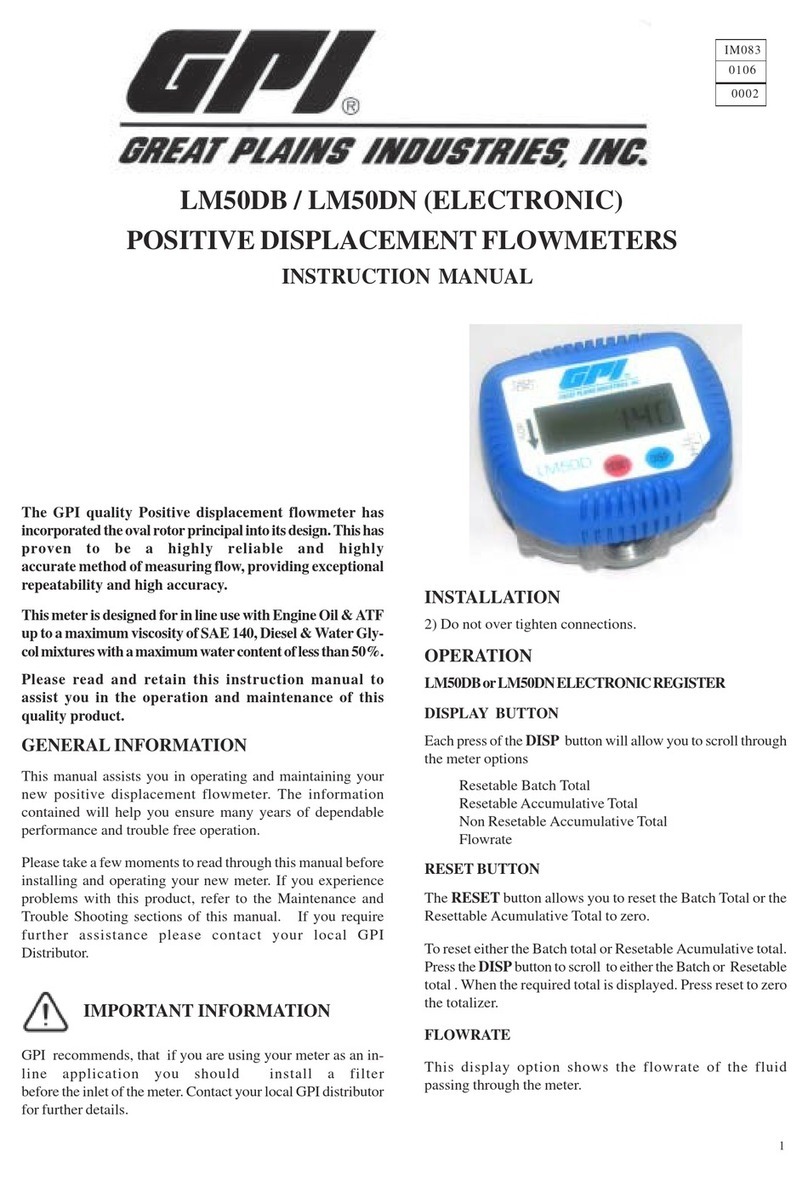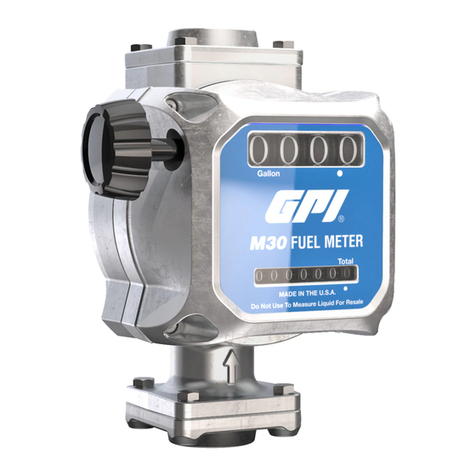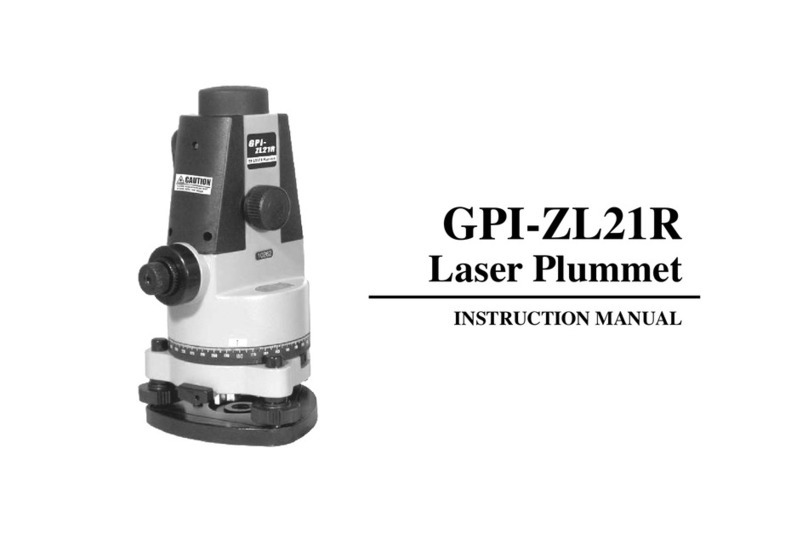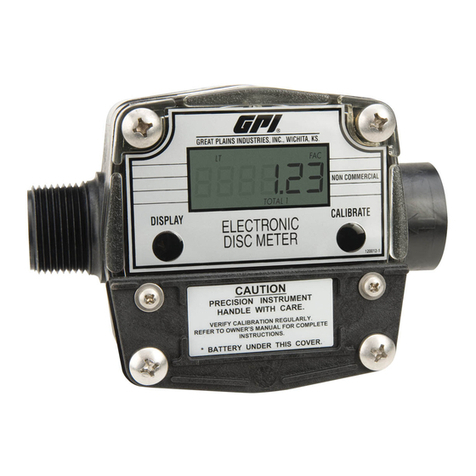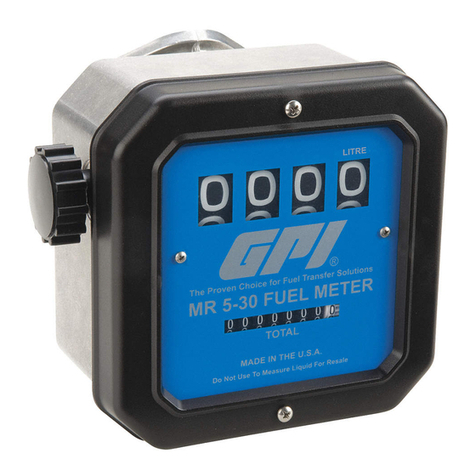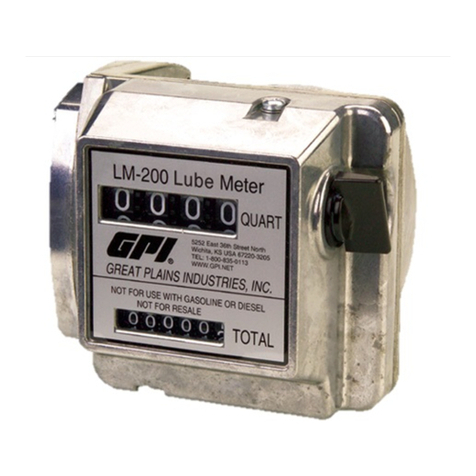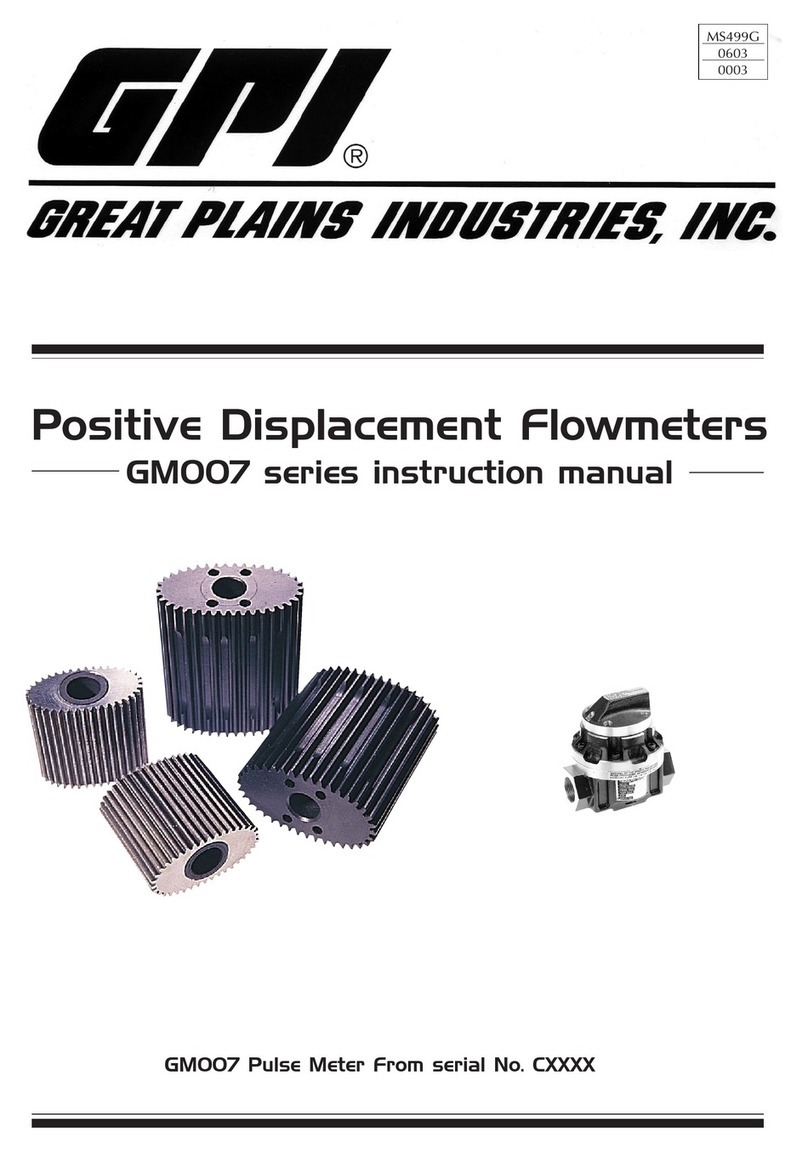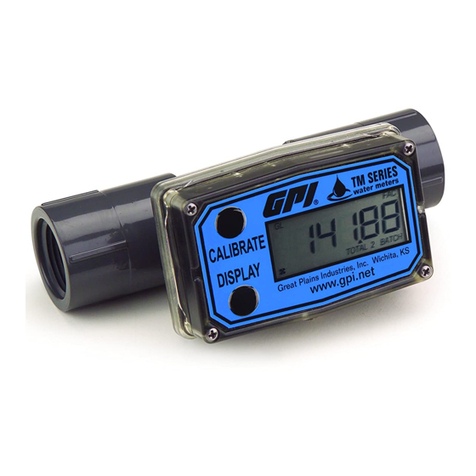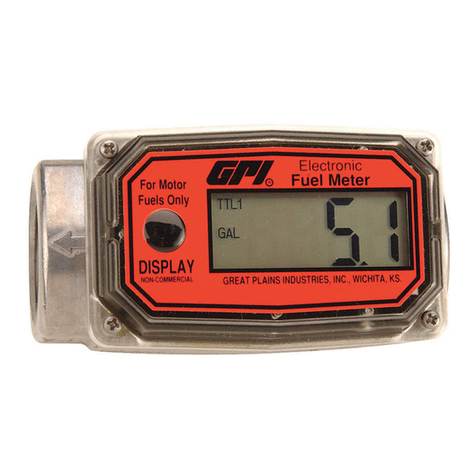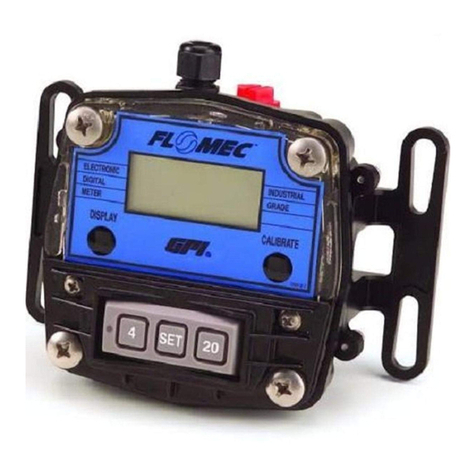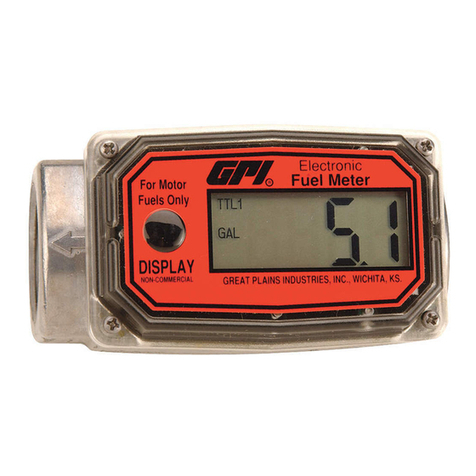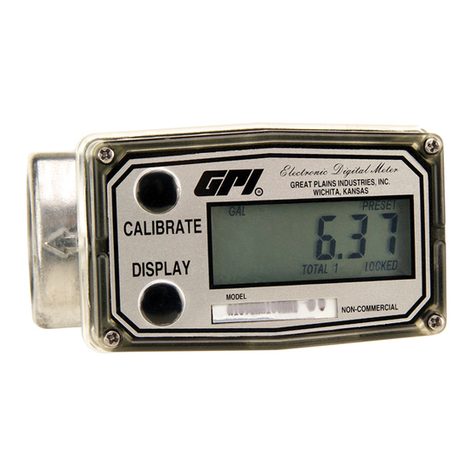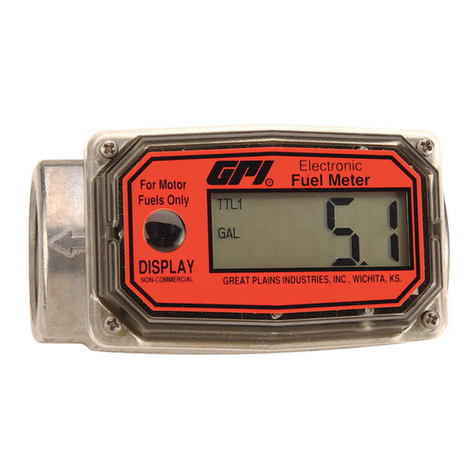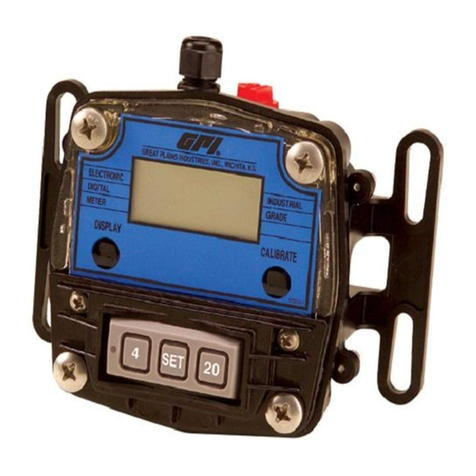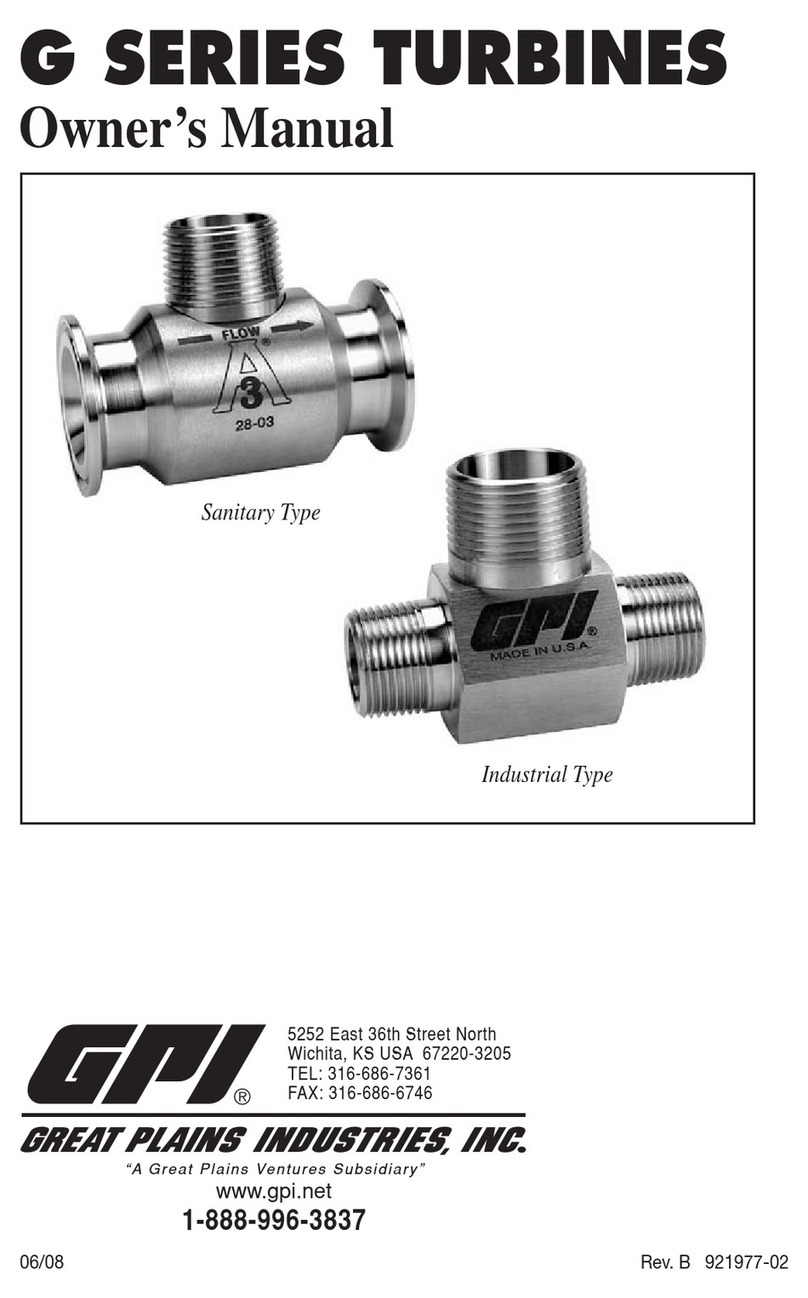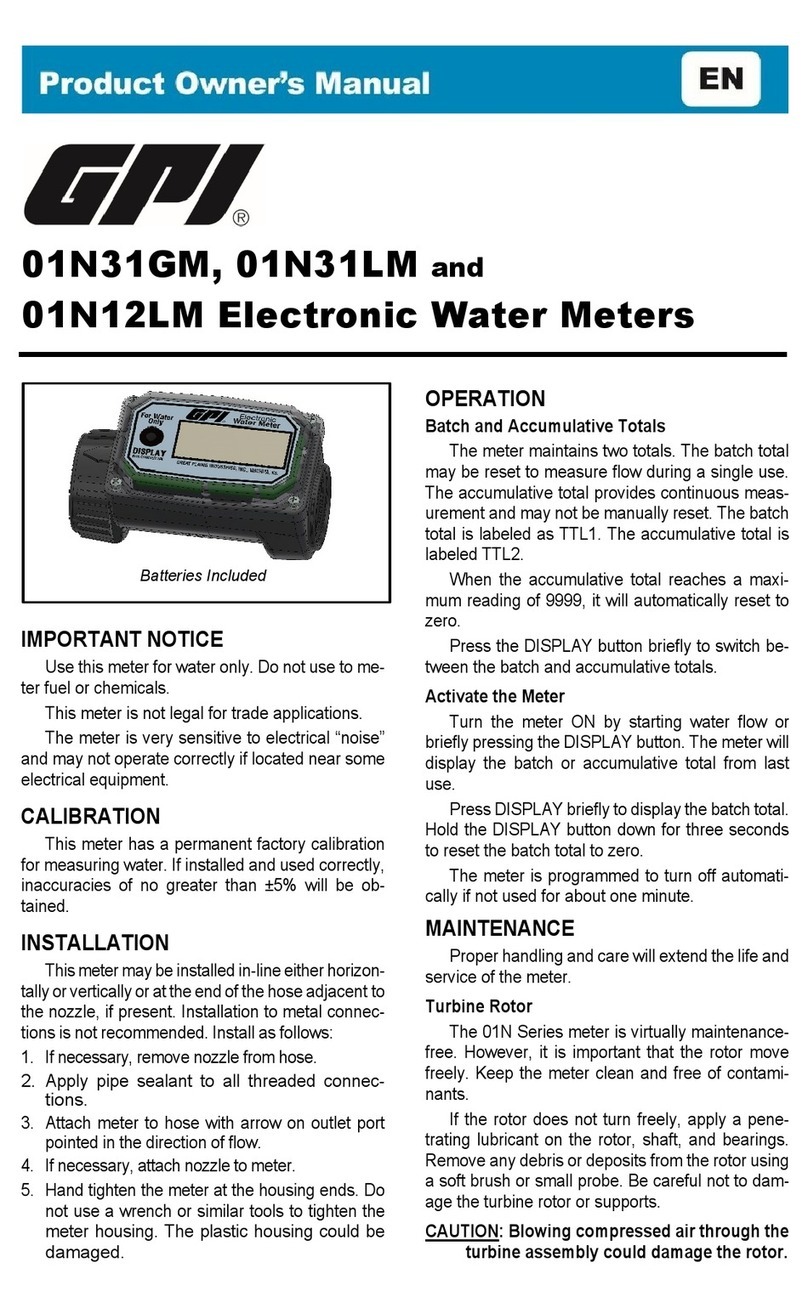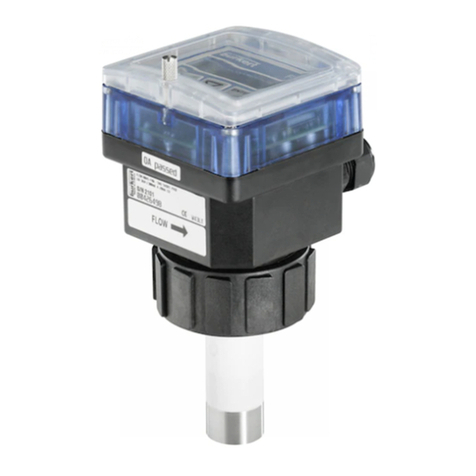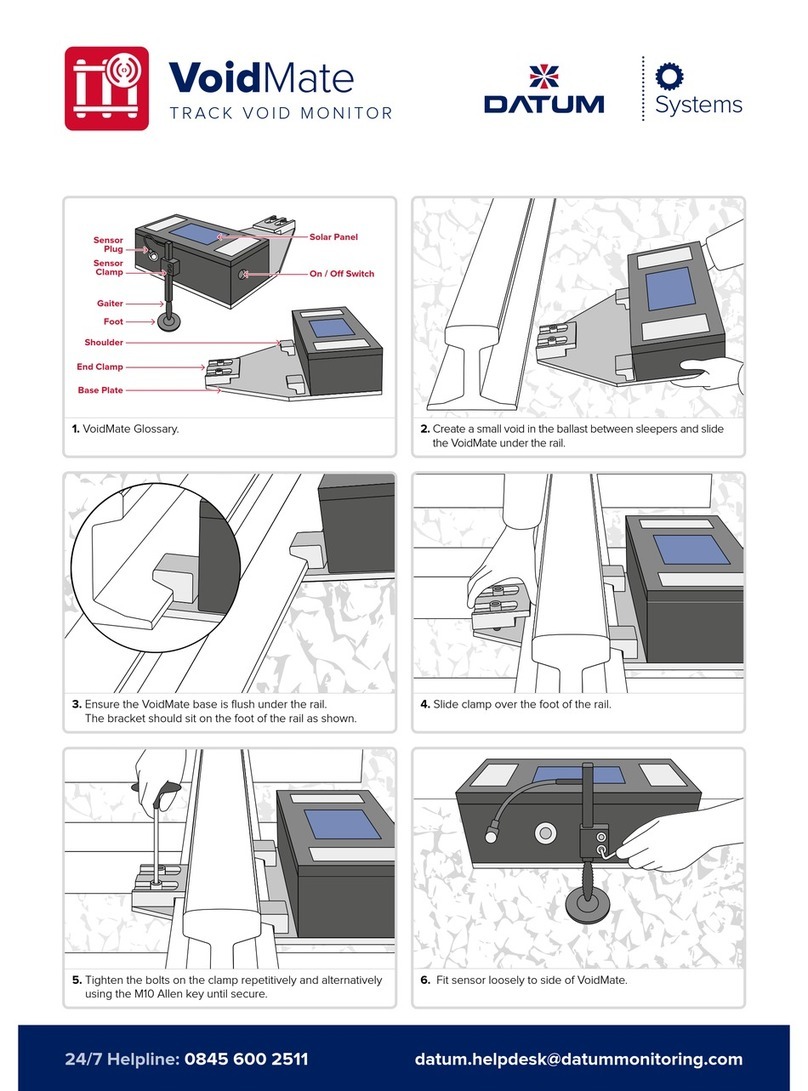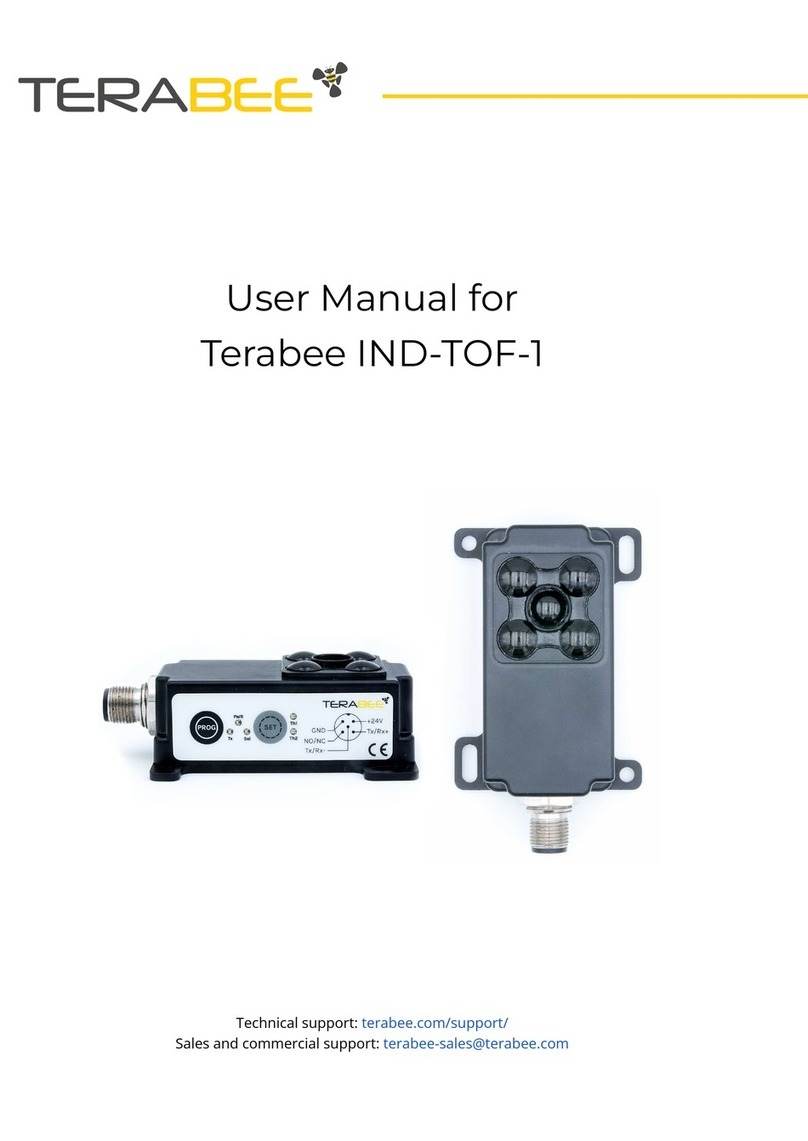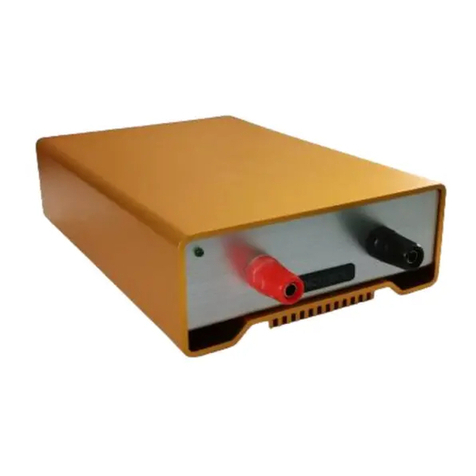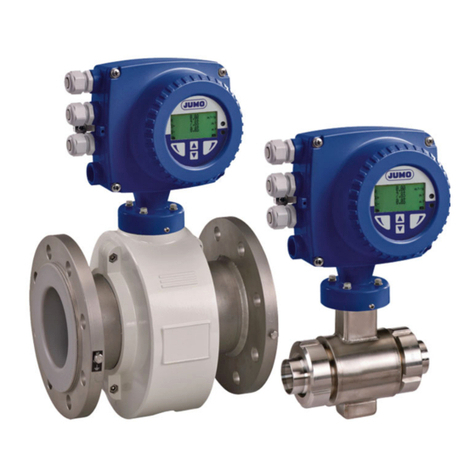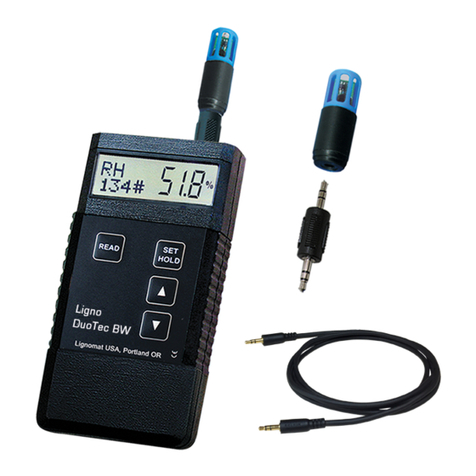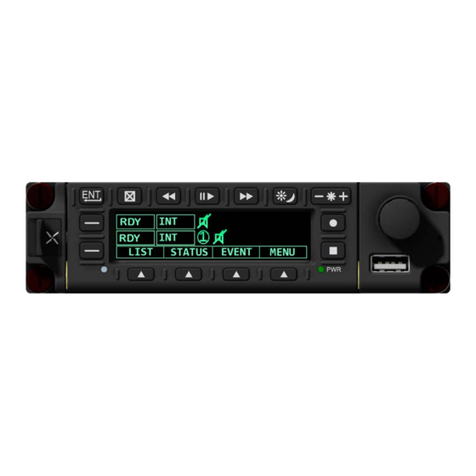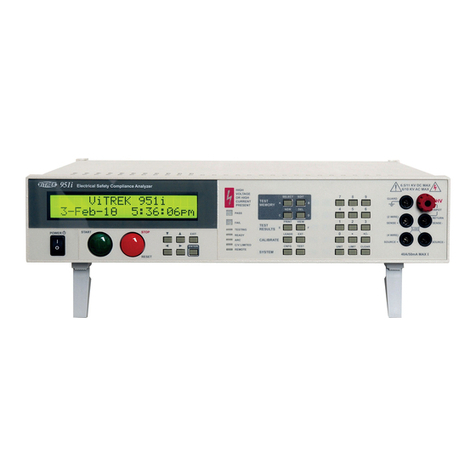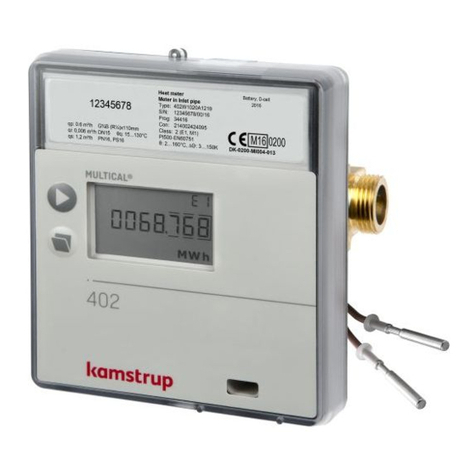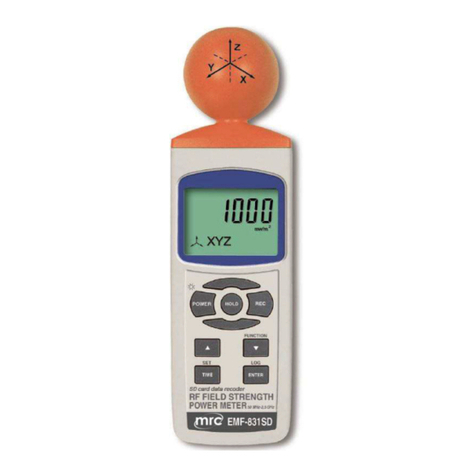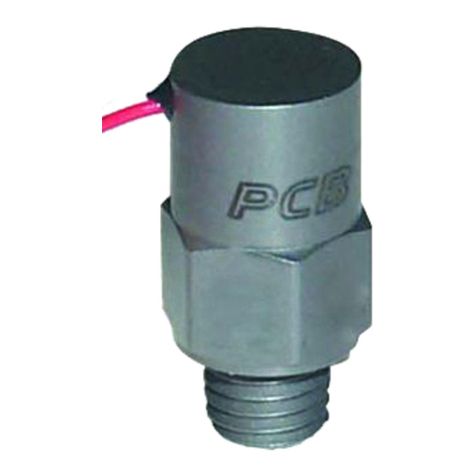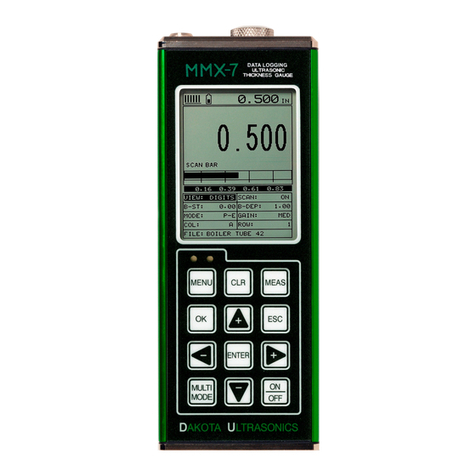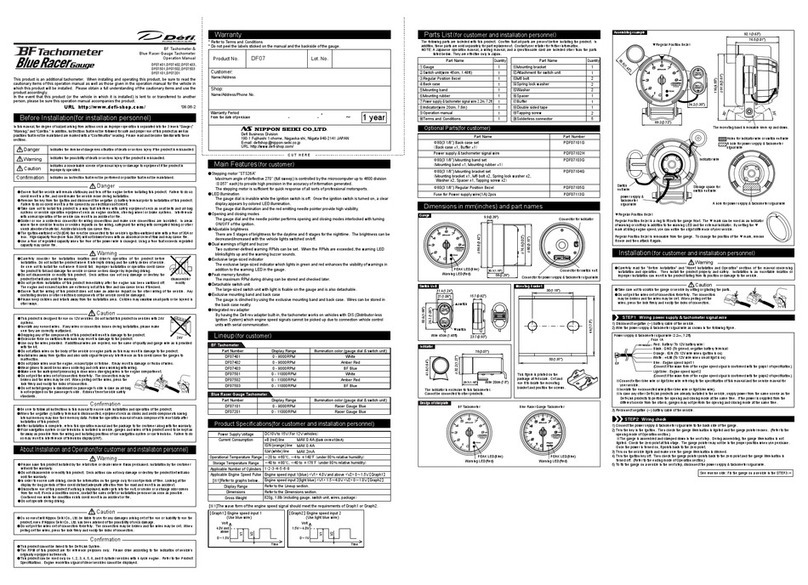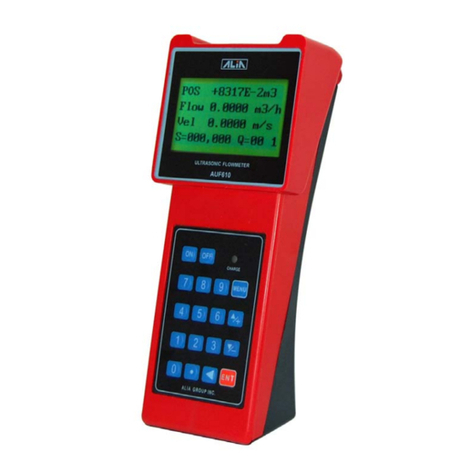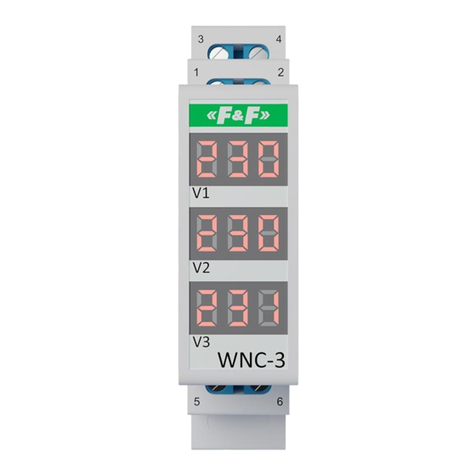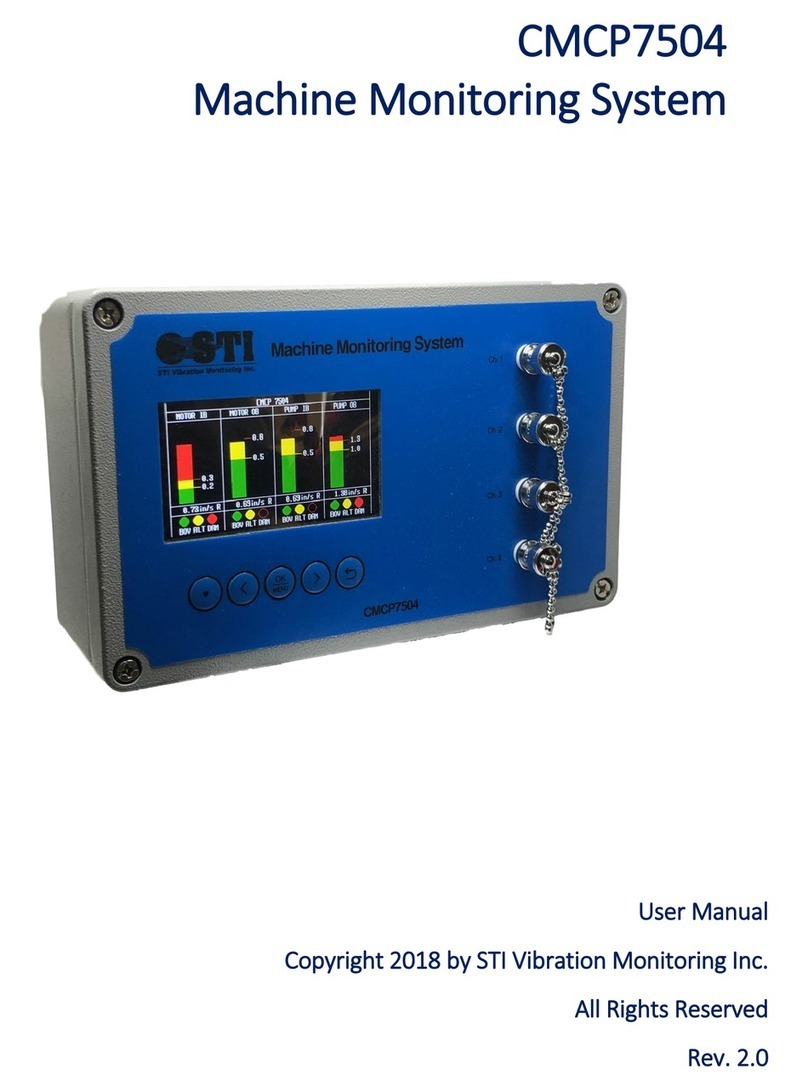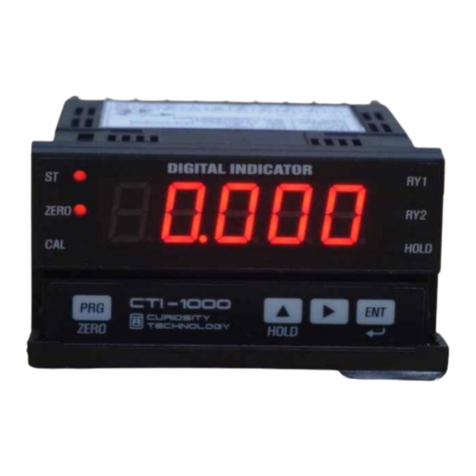GPI GPI-122 User manual

GPI-120/120L series
Instruction Manual
GPI-122 GPI-122L GPI-125 GPI-125L
NO.3.20110322

1
Preface
Congratulations! We, GPI are proud to present you with these GPI-120 series
instrument. Your total station is a robustious and reliable instrument whose
performance and design are excellent.
To fully appreciate and protect your investment, we suggest that you take the
necessary time to read and fully understand this manual. We have a dedicated
service organization. If the need arises, please don’t hesitate to contact us.
GPI-120 series total station is larruping specification as follow
1. Absolute angle measuring system, if you shut on the instrument, you need not
set the angle origin
2. Strong data management system---fat file system, it can save 20,000 points
(measured data)
3. No prism EDM
4. Many programs for measuring application
Thank you for your trust and confidence

2
Contents
1. Precautions for Safety ...................................................................................... 4
1.1 NOTE.......................................................................................................... 4
1.2 Definition of Indication ............................................................................. 5
1.3 Safety Standards for Laser ( GPI-120 series ) ........................................... 6
1.4 About User.................................................................................................. 7
1.5 Exceptions from Responsibility.................................................................. 8
2. Preparation before Measurement ..................................................................... 9
2.1 About Battery............................................................................................. 9
2.1.1 Battery Power Symbol............................................................................. 9
2.1.2 Replace the Battery ............................................................................... 10
2.1.3 Recharge the Battery............................................................................. 10
2.2 Setting Up the Instrument ........................................................................ 11
2.3 Centering and Levelling-Up .....................................................................11
3. Basic Functions .............................................................................................. 13
3.1 Nomenclature ........................................................................................... 13
3.2 Basic Key Operation................................................................................. 15
3.3 Display ..................................................................................................... 15
3.4 Mode Diagram.......................................................................................... 16
3.5 Power On/Off .......................................................................................... 17
3.6 How to Input Number and Alphabet ....................................................... 17
3.7 How to Configure..................................................................................... 18
4. Angle Measurement ....................................................................................... 20
4.1 Measure a Horizontal Angle of Two Points ............................................ 20
4.2 Set the Horizontal Angle to a Required Value......................................... 20
5. Distance Measurement ................................................................................... 21
6. Coordinate Measurement ............................................................................... 22
6.1 Input the Occupied Point Data.................................................................. 22
6.2 Azimuth Setting........................................................................................ 24
6.3 3D Coordinate Measurement.................................................................... 24
7. Setout Measurement........................................................................................ 26

3
7.1 Distance Setout......................................................................................... 26
7.2 Coordinates Setout Measurement ............................................................ 28
8. Area ................................................................................................................ 30
8.1 Area Calculation by Measured Data or Input Data ................................. 30
9. Offset Measurement ....................................................................................... 32
9.1 Distance Offset Measurement.................................................................. 32
9.2 Angle Offset Measurement ...................................................................... 33
9.3 Plane Offset Measurement........................................................................ 34
9.4 Column Offset Measurement.................................................................... 36
10. MLM............................................................................................................. 37
11. Height measurement (REM)......................................................................... 39
12. Intersection.................................................................................................... 41
12.1 Coordinates Intersection......................................................................... 42
12.2 Elevation Intersection – Coor.Z.............................................................. 43
12.3 Precautions When Performing Intersection............................................ 45
13. Point Projection ............................................................................................ 46
13.1 Define Baseline........................................................................................... 46
14. Inverse........................................................................................................... 48
15. Roadway ....................................................................................................... 49
15.1 Define the Horizontal Curve of Roadway ............................................. 50
15.2 Defining the Vertical Curve of Roadway............................................... 53
15.3 Roadway setout ...................................................................................... 53
16. Fileman ......................................................................................................... 56
17. Prompt,Warning and Error Messages......................................................... 58

4
1. Precautions for Safety
1.1 NOTE
Don’t collimate the sun directly
Avoid to insolate the instrument, and don’t collimate the sun directly for protecting
eyes and instrument.
Avoiding the librations on the instrument
When transporting, keep the instrument in the case and try your best to lighten
librations.
Carry the instrument
When carrying,the instrument handle must be hold tight.
Check the battery power
Before using it, you should check the power whether it is enough.
Take out the battery
It is not suggested to take out the battery when the instrument is on, otherwise, the
stored data may be lost, so it is better to replace the battery after power off the
instrument.
Set up the instrument on the tripod
When using it please insure the connection between tripod and instrument is firm. It
is better to work with wooden tripod for the measurement accuracy.
Assemble the tribrach on the instrument
The setting of tribrach would influence the accuracy. The tribrach should be check
frequently, the screw which connects the tribrach and alidade must be locked tightly.
And the central fixing screw should be tight.
High temperature condition
Don’t put the instrument in high temperature condition(50℃up)for a long time, it
is bad for the instrument performance.
Temperature changing sharply
The sharp temperature changing on the instrument or prism will shorten the distance
measurement range, for example, after taking the instrument out from a warm car to
a cold condition, wait for some time, it can be used when it adapts the surrounding
condition.
The noise from the instrument
When the instrument working, it is normal if you hear the noise from instrument
motor, it will not affect the instrument work.
Stored data responsibility
GPI-120 should not be held liable for the lost data because of wrong operation.

5
1.2 Definition of Indication
For the safe of your product and prevention of injury to operators and other persons as
well as prevention of property damage, items which should be observed are indicated by
an exclamation point within a triangle used with WARNING and CAUTION statements
in this manual.
The definitions of the indication are listed below. Be sure you understand them before
reading the manual’s main text.
WARNING
Do not perform disassembly or rebuilding. Fire, electric shock or burns could result.
Only GPI-120 authorized distributors can disassemble or rebuilt.
Do not collimate the sun directly. The eye injury or blind could result.
Do not cover the charger. Fire could be result.
Do not use defection power cable, socket or plug. Fire, electronic shock could result.
Do not use wet battery or charger. Fire, electronic shock could result.
Do not close the instrument to burning gas or liquid, and do not use the instrument in
coal mine. Blast could be result.
Do not put the battery in the fire or high temperature condition. Explosion, damage
could result.
Do not use the battery which is not specified by GPI-120. Fire, electric shock or burn
could result.
Do not use the power cable which is not specified by GPI-120. Fire could result.
Ignoring this indication and making an operation
error could possibly result in death or serious
injury to the operator
Ignoring this indication and making an operation
error could possibly result in personal injury or
property damage.
WARNING:
CAUTION:

6
Do not short circuit of the battery. Fire could result.
When this product encounters disturbance of severe Electrostatic Discharge, perhaps
it will have some degradation of performance like switching on/off automatically and
so on.
CAUTION
Do not touch the instrument with wet hand. Electric shock could result.
Do not stand or seat on the carrying case, and do not turn over the carrying case
arbitrarily, the instrument could be damaged.
Be careful of the tripod tiptoe when setup or move it.
Do not drop the instrument or the carrying case, and do not use defective belt, agraffe
or hinge. Instrument damage could result.
Do not touch liquid leaking from the instrument or battery. Harmful chemicals could
cause burn or blisters.
Please assemble the tribrach carefully, if the tribrach is not stable, series damage
could result.
Do not drop the instrument or tripod, series damage could result. Before use it, check
the central screw is tight.
1.3 Safety Standards for Laser ( GPI-120 Series )
GP-120 series adopt the class of Laser Product according to IEC Standard Publication
60825-1 Amd. 2:2001. According this standard, EDM device is classified as Class 3R
Laser Product when reflectless measurement is selected, when the prism and reflective
sheet is selected as target, the output is equivalent to the safer class 1. Follow the safety
instructions on the labels to ensure safe use.
CAUTION: CLASS 3R LASER RADIATION WHEN OPEN
AVOID DIRECT EYE EXPOSURE.
CAUTION: CLASS 2 LASER RADIATION WHEN OPEN
DO NOT STARE INTO THE BEAM

7
Note for Safety
1.4 About User
1. This product is for professional use only!
The user is required to be a qualified surveyor or have a good knowledge of
surveying, in order to understand the user manual and safety instructions, before
operating, inspecting or adjusting.
2. Wear required protectors(safety shoes, helmet, etc.)when operating.
Laser emit
WARNING
●Never point the laser beam at other's eyes, it could cause serious injury.
●Never look directly into the laser beam source, it could cause permanent eye
damage.
●Never stare at the laser beam, it could cause permanent eye damage.
●Never look at the laser beam through a telescope or other optical devices, it
could cause permanent eye damage.

8
1.5 Exceptions from Responsibility
1. The user of this products is expected to follow all operating instructions and make
periodic checks of the product’s performance.
2. The manufacturer, assumes no responsibility for results of a faulty or intentional
usage or misuse including any direct, indirect, consequential damage, and loss of
profits.
3. The manufacturer, assumes no responsibility for consequential damage, and loss of
profits by any disaster,(an earthquake, storms, floods etc.).
4. The manufacturer, assumes no responsibility for any damage, and loss of profits due
to a change of data, loss of data, an interruption of business etc., caused by using the
product or an unusable product.
5. The manufacturer, assumes no responsibility for any damage, and loss of profits
caused by usage except for explained in the user manual.
6. The manufacturer, assumes no responsibility for damage caused by wrong transport,
or action due to connecting with other products.

9
2. Preparation before Measurement
2.1 About Battery
2.1.1 Battery Power Symbol
Measurement is possible
The battery is lower, it is better to replace or recharge it
Measurement is impossible, it is necessary to replace or recharge
NOTE:
The working time of battery will be effected by many factors, such as ambient
temperature, recharging time, recharging and discharging times. On the data safe side,
we suggest the users recharge the battery full or prepare several full batteries before
operation.
◆ The battery symbol only indicates power capability for current measurement mode.
The power consumption in distance measurement mode is more than in angle mode,
if the instrument enters into distance measurement mode from angle mode, the power
maybe auto-off because of lower battery.
◆ The symbol only indicates the supply power but not the instantaneous power change.
And if the measurement mode changes, the symbol will not show the power’s
decrease or increase immediately.
Vz: 92°18' 22"
HR: 187°07' 15"
Save Set0 SetA P1/2

10
◆ It is suggested to check every battery power before field work.
2.1.2 Replace the Battery
1. Remove the battery
①Press the button downward as shown left
②Remove the battery by pulling it toward you
2.1.3 Recharge the Battery
2. Mount the battery
①Insert the battery to the instrument
②Press the top of the battery until you hear a Click.
As above figures show, connect the charger and the battery, then plug the charger into
the outlet of 110V-220V AC power supply, recharging will begin.

11
NOTE:
The indicator light on the charger will illuminate three separate colors for varies
mode conditions:
Solid Red Light — indicates that the charger is working;
Solid Green Light — indicates that the charge has finished;
Flashing Red Light — indicates no battery on charging, poor connection or some
problems exist.
It is recommended to continue charging for 1 or 2 hours after the light turn green.
Once the red light flashes constantly after the charger is plugged into the outlet of
110V-220V AC power supply, please remove the battery and reconnected it after 3
or 5min.
2.2 Setting Up the Instrument
Mount the battery in the instrument before performing this operation because the
instrument will tilt slightly if the battery is mounted after leveling.
1.Set up the tripod first: extend the extension legs to suitable lengths and tighten the
screws on the midsections. Make sure the legs are spaced at equal intervals and the head
is approximately level. Set the tripod so that the head is positioned over the surveying
point. Make sure the tripod shoes are firmly fixed in the ground.
2.Mount the instrument on the tripod head. Supporting it with one hand, tighten the
centering screw on the bottom of the unit to make sure it is secured to the tripod.
2.3 Centering and Levelling-Up
1.Position tripod legs so that the plummet is aimed to the ground mark point. Turn the
focusing ring of the optical plummet to focus.
2.Turn three footscrews of the tribrach till the center of reticle exactly coincides with the
surveying point in any position.

12
3. Move the tripod legs to centre the circular level. The instrument is now roughly
leveled-up.
4. Center the bubble in the circular level]
5. Center the surveying point again
Loosen the centering screw slightly. Looking through the optical plummet eyepiece,
slide the instrument over the tripod head until the surveying point is exactly centered
in the reticle. Re-tighten the centering screw securely.
6. Check again to make sure the bubble in the plate level is centered.
If not, repeat procedure 4.
Screw A Screw B
Screw C
Bubble
Plate level
Loosen the horizontal motion clamp, and turn the
instrument till the plate level is perpendicular to a
line shaped with screws A and B. Adjust the
screws A and B to make the bubble in the center
of the level.
Turn the instrument approximately 90 °Adjust
screw C, till the bubble in the center of the level.
Repeat above steps until the bubble remains in the center of the plate level while the
instrument is rotated to an
y
p
osition.
Screw A Screw B
Screw C

13
3. Basic Functions
3.1 Nomenclature
Optical sight
Objective
Vertical
tangent screw
Keypad
Handle
Plate level
Screen
Tribrach
RS-232C port
Tribrach
fastening screw

14
Handle screw
Eyepiece
Optical
Plumme
t
Circular level
Tribrach
Leveling screw
Horizontal
tangent screw
Indtrument
height mark
Battery
Focusing
knob

15
3.2 Basic Key Operation
NOTE:
1. ”Power” indicate
2. Basic measurement is
composed of angle and dist
and coordinate measurement
mode
3.3 Display
The LCD could display 6 ines with 24 characters per line. In measurement mode, it
displays some common information in above 5 lines and displays soft functions in the
last line.
Keys Description
.
F1 ~ F4 Select the functions matching
the softkeys
0 ~ 9
1. Input number when numeric
input
2. Input characters when
alphabetic input
. Input a decimal point
± Input plus / minus sign
Power Power On / Off
★Enter into setting mode directly
ENT End dialog and save setting to file
ESC
Escape to the previous menu or
mode; end dialog and not save
Keys Description
ANG
1. Enter into angle measurement
mode (under basic measurement
mode)
2. Up arrow
DIST
1. Enter into dist and angle
measurment mode (under basic
measurement mode)
2. Down arrow
CORD
1. Enter into coordinate and angle
measurment mode (under basic
measurement mode)
2. Left arrow
MENU
1. Enter into menu mode (under
basic measurement mode)
2. Right arrow

16
3.4 Mode Diagram
–Setout–
1.Setup station ▲
2.Setup BSS
3.Setout
4.Odd coordinate
5.Intersection
6.Input coordinate ▼
–Fileman–
1.Fileman ▲
2.Import
3.Export
4.Disk format
5.Disk information
6.Input coordinate ▼
–Program–
1.REM(Height meas) ▲
2.MLM
3.Coor.Z
4.Area
5.Point projecting
6.Roadway ▼
–Parameter–
1.Units(angle) ▲
2.Units(dist)
----------------------------
3.HA mode
4.VA mode
5.EDM mode
▼
–Calibration–
1.Index error ▲
2.Tilt error
----------------------------
3.Add Const
4.Mul Const
▼
–Collection–
1.Select file ▲
2.Setup station
3.Setup BSS
4.Sequence of collection
5.Collection
▼
Vz: 92°18' 22"
HR: 187°07' 15"
Save Set0 SetA P1
/
2
Vz: 92°18' 22"
HR: 187°07' 15"
SD: m
HD:
VD:
Save Meas Mode P1/2
Dist mode/basic measurement
Vz: 92°18' 22"
HR: 187°07' 15"
N: m
E:
Z:
Save Meas Mode P1/3
Menu mode
–Menu–
1.Collection ▲
2.Setout
3.Fileman
4.Program
5.parameter
6.Calibration ▼
[DIST]
[ANG]
[CORD]
[DIST]
[MENU]
[ESC]
廴Angle mode / basic measurement mode
[1]
[3]
[2]
[4]
[5]
[6]
Coordinate mode/basic measurement mode

17
3.5 Power On/Off
I. Power on
1. Confirm the instrument is leveling, press the
red key 【POWER】.
2. Release 【POWER】,the instrument will
display the angle mode screen.
II. Power off
3. Press the key 【POWER】, the instrument
will pop up “power off” dialog box,【ENT】key
will shut down.
3.6 How to Input Number and Alphabet
All Number and alphabet inputing must be carried out in a dialog box. for example,
input point name SUN1A and STN -123.456 in “Setup station” dialoc box.
1. Press【F3】, the soft key prompt
will switch “Alph.”.
2. Press【7】, ’S ’will present in
inputbox and the caret shift to nest
position
3. Pause about 0.4second,because the
Vz: 92°18' 22"
HR: 187°07' 15"
Save Set0 SetA P1/2
Type : GPI-122L
S/N : A00001
Ver : OCT 10 2010
Save Set0 SetA P1/2
ENT->Power off
ESC->Quit
3 sec
onds auto quit
Setup station
Pt.name .
STN
STE
STZ
B.S. Clear Alph. Enter
Caret
F1 F2 F3 F4

18
next alphabet ‘U’ is relational with【7】.click
【7】,’SS’ will present in inputbox, click【7】
again ‘ST’ will present in inputbox, click【7】
again, ’SU’ will present in input box.
4. Click【5】, ’SUN’ will present in input box.
5. Press【F3】,switch into Number input mode
6. Press【1】,’SUN1’ will present in input box
7. Press【F3】,switch into Alphabet input mode
8. Press【1】,’SUN1A’ will present in input box
9. Press【F4】,the cerat will shift into STN input box, because the STN coordinate is
Number attribute, the prompt “Alph.” automatically switch into “Num.”,
10. Input【±】,【1】,【2】,【3】,【.】,【4】,【5】,【6】in turn,
11. Press【ENT】,end dialog
3.7 How to Configure
Press key {★} directly to enter into in any status, and do some basic settings.
1. Backlight
Press【F1】, the backlight will be switched on or off
2. Tilt
Press【F2】,the tilt sensor status will be present
Press【F2】again the tilt sensor will be switch on or
off
【ESC】will quit tilt sensor status display
3. Point-to
Press【F3】,the laser beam will appear, press【F3】
again the laser beam will disappear.
4. Reflecting object
Press the EDM mode will be switched between
“prism”,” no prism” and “reflector board”
5. LCD contrast
Press ▼▲,will increase or decrease the value of
contrast
Setup station
Pt.name SUN .
STN
STE
STZ
B.S. Clear Num. Enter
Reflector: Prism 彡
Contrast: 5 ◆
[*] Choose file
Light Tilt Point-to Factor
Temperature: 25 ℃
Press: 1013.0 hPa
Prism const: 0 mm
PPM: 4ppm
Signal:
B.S. Clear Sigal Enter
Reflector: Prism 彡
Contrast: 5 ◆
[*] Choose file
Light Tilt Point-to Factor
Tilt:-50

19
6. Factor
Press【F4】, pop up “atmosphere parameter setting” dialog box, after you input
temperature and atmospheric pressure, the PPM value will be calculated
automatically. when you press【F3】the EDM will return current EDM signal.【ESC】
will quit signal show;
Another setting and config is operated by main menu — “parameter”
able 3-1 List of measurement condition setting
Item Options
1.Unitsoption
DMS* / GON / MIL;
Meter* / feet / feetinch;
℃* / ℉
hPa* / mmHg
2.Unitsoption(dist)InterFeet* / US Feet
3.K option 0﹡/ 0.14 / 0.20
4.VA display Zenith﹡/ Horizon 0 / V90 / slope
5.HA display HAR﹡/ HAL
6.Auto Power off Never* / 5min / 10min / 20min
7.Coord N-E-Z﹡/ E-N-Z
8.EDM mode Single* / repeat / Continue / Track
9.Mini readout 1"* / 5" / 10"
NOTE:
◆Every first options with the symbol “﹡”are the factory setting.
Through the menu function , you can config the instrument. Press【MENU】,pop up main
menu then select【5】, the config menu is shown as follow:
You can config all instrument options according to your appliction
–Parameter–
1.Units(angle) ▲
2.Units(dist)
----------------------------
3.HA mode
4.VA mode
5.EDM mode
▼
This manual suits for next models
3
Table of contents
Other GPI Measuring Instrument manuals
